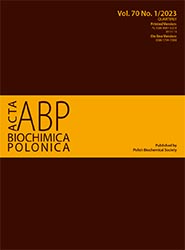Could the lake ecosystems influence the pathogenicity of the SARS-COV-2 in the air?
Abstract
During the first 200 days of the Covid-19 pandemic in Poland, lower morbidity and mortality due to
SARS-COV-2 infection were recorded in three regions covered by many small and large lakes (West Pomerania 5.8 deaths/100 000 population, Warmian and Masurian 7.6 deaths/100 000 population, Lubusz 7.3 deaths /100 000 population, compared to Poland average of 16.0 deaths/100 000 population). Moreover, in Mecklenburg (Germany), bordering West Pomerania, only 23 deaths (1.4 deaths/100 000 population) were reported during the same period (Germany 10 649 deaths, 12.6 deaths/100 000 population). This unexpected and intriguing observation would not have been noticed if SARS-CoV-2 vaccinations were available at that time. The hypothesis presented here assumes the biosynthesis of biologically active substances by phytoplankton, zooplankton or fungi and transfer of these lectin-like substances to the atmosphere, where they could cause agglutination and/or inactivation of pathogens through supramolecular interactions with viral oligosaccharides. According to the presented reasoning, the low mortality rate due to SARS-CoV-2 infection in Southeast Asian countries (Vietnam, Bangladesh, Thailand) could be explained by the influence of monsoons and flooded rice fields on microbiological processes in the environment. Considering the universality of the hypothesis, it is important whether the pathogenic nano- or micro particles are decorated by oligosaccharides (as in case of the African swine fever virus, ASFV). On the other hand, the interaction of influenza hemagglutinins with sialic acid derivatives biosynthesized in the environment during the warm season may be linked to seasonal fluctuations in the number of infections. The presented hypothesis may be an incentive to study unknown active substances in the environment by interdisciplinary teams of chemists, physicians, biologists, and climatologists.
Acta Biochimica Polonica is an OpenAccess quarterly and publishes four issues a year. All contents are distributed under the Creative Commons Attribution-ShareAlike 4.0 International (CC BY 4.0) license. Everybody may use the content following terms: Attribution — You must give appropriate credit, provide a link to the license, and indicate if changes were made. You may do so in any reasonable manner, but not in any way that suggests the licensor endorses you or your use.
Copyright for all published papers © stays with the authors.
Copyright for the journal: © Polish Biochemical Society.


